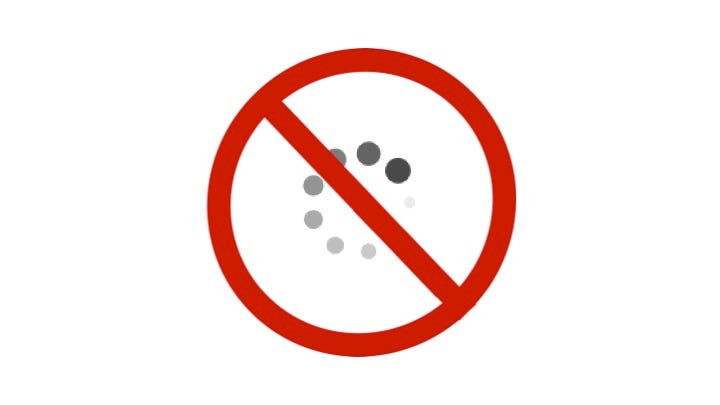The State of the Digital Publishing Ecosystem Part 2.3

So we are now homeward bound, en route to the (Over) Promised Land of Mount Olympus. Let us now examine some final survival tactics as we navigate the perilous waters of The River Styx…
For more on topics like this subscribe to the RTÉ Innovation Show podcast here
Rule 9 — The Need for Speed

A few years ago Amazon calculated that a page load slowdown of just one second could cost it $1.6bn in sales each year (I am sure that is more now that Amazon turnover is even larger).
The page speed tolerance is now only three seconds, people simply won’t wait for slow tech.
The expectation has been set by the mega platforms and the traditional non-tech first publishers struggle to keep up with tech demands. Instead of immediate investment, expenditure is capitalised where possible and development is delayed wherever possible or until the next financial year when budgets are being set.
We need to get our tech up to speed as fast as possible to future-proof (present-proof) our businesses.
Rule 10 — Atomise, Bag and Tag Content

Atomisation means to obliterate (content) into smaller pieces. The web now demands this.
Google’s mission is to organise the world’s information and because Google is now a gateway to the net and a discovery gateway at that, we must obey the rules.
In this respect our content must be unbundled into smaller components and then tagged and categorised in order to be discoverable.
For example take a show from RTÉ Radio 1, we need to break each interview down into component interviews and then ensure they are tagged correctly to be found easily by Google and the other search engines. The reality is that our content needs to be accessible for humans, but also find-able by machines. For the latter we need to obey technical requirements set out by search engines and databases.
The content also needs to be categorised for the audience to find it easily when they enter owned platforms. Portals (web, app or headset) need clear navigation so that the user can easily find their way around.
Rule 11 — The 4 ‘S’ and the 4 ‘R’ Rules
Content needs to be:
4 ‘S’ Rule
1. Searchable: (by humans and machines) : Atomised, bagged, tagged and with a clear navigation.
2. Sociable: Strong enough content to warrant being shared (reco-friendations) and our tech needs to allow content to be shared easily with one click.
3. Snackable: Content needs to be in bite-size chunks, attentions spans are much less than ever before, so content needs to be tailored to the platform on which it sits. (note this does not mean dumbing down content, it simply means adapting it for the platform, see rule 7 from a previous Thursday Thought.
4. Superfast: Users have no tolerance for delays, remember three seconds is a long time on the web. (See rule 9 above)
4 ‘R’ Rule
Content needs to take into account the context of the user, so where the user is: Are they on the couch? Are they up feeding a baby at 2am? Are they on their 40-minute commute, etc.
Content needs to consider what device the user is on.
The 4 ‘R’ rule goes like this, you need to reach the:
Right Customer (with the)
Right Message (on the)
Right Platform (at the)
Right Time
Rule 12 — Prosumerism and Engagement
Prosumer = Pro(ducer) + (Con)sumer
Younger (and not so younger) audiences want to be part of their content consumption more and more and they expect content to be tailored for them.
Examples of prosumerism are remix competitions, playlist generation, user-generated content competitions such as best selfie, etc.
Simply creating content is not enough any more, people want transparency, openness, and involvement in content creation.
You also need to be engaging to an audience. With so much content available you need to offer a pull mechanic, pull the audience to your content rather than push your content on the audience. We will cover all these rules in more depth in future Thursday Thoughts.
Rule 13 — Trust
In today’s digital eco-system trust is of huge importance. Where user behaviour is being tracked by most publishers, the publisher must be respectful of users data. The user must not abuse the transaction that is quality content or services in exchange for your data to serve more relevant (and thus slightly more lucrative) advertising and more relevant content.
Trust goes beyond that though. The users trust in the source of the content is paramount, if there is trust that content is accurate and unbiased you are in a very strong position.
The (Over) Promised Land

(Pic — Wikipedia)
So you thought made it through the murky waters of the river Styx. I am afraid not yet! This is not quite Mount Olympus, you still have some beasts to conquer. There are still many twists and turns to come.
The next act in this series is entitled, “The Four Horsemen of the Adblockalypse”.
Next week we will cover the first horseman “Adblocking”.
If you like the topics covered here, listen to the advice of ian dodson, co-founder of the Digital Marketing Institute and author of a great new book ‘The Art of Digital Marketing’ this Saturday 4th June on the RTÉ Innovation Show here.
We also talk to John Ring (@RingJohn ), Founder and CEO of TinderPoint and as part of RTÉ Supporting the Starts we talk to Conall Laverty Founder and CEO of WIA.IO. Wia